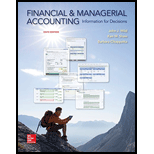
Balanced scorecard:
Balanced scorecard can be defined as a scorecard used to measure business performance, based on four different perspectives. A balance scorecard helps managers to control or take care of the different aspects of the business effectively. The four perspectives are as follows.
► Customer perspective: Customer perspective is a part of balanced scorecard. It deals with the question as to “How customer sees us?” It measures those things that are related to delivering value to the customers.
► Internal process perspective: Internal process perspective deals with the internal matter of an organization. It deals with various internal matters that affect customer satisfaction in a negative way. It includes factors, such as employee skills and cycle time.
► Innovation and growth perspective: Innovation and growth perspective deals with the question as to “What will help the business to keep it running in the long-term?” It includes factors, such as innovation, competition, and new product.
► Financial perspective: Financial perspective deals with the question as to “How good we are to our shareholders?” It means how much income is generated for the shareholder. It includes factors such as profit margin and asset turnover.
To classify: The given performance measures into the most likely balanced scorecard perspective it relates to.
Want to see the full answer?
Check out a sample textbook solution
Chapter 22 Solutions
Financial and Managerial Accounting: Information for Decisions
- No AI ANSWERarrow_forwardGeneral Accounting: Lian has $616,400 in sales. The profit margin is 8.75 percent and the firm has 14,000 shares of stock outstanding. The market price per share is $45.25. What is the price-earnings ratio? Answer?arrow_forwardI want the correct answer accountingarrow_forward
- Accurate answerarrow_forward???arrow_forwardSmith Corporation uses direct labor hours in its predetermined overhead rate. At the beginning of the year, the estimated direct labor hours were 24,500 hours, and the total estimated manufacturing overhead was $490,000. At the end of the year, actual direct labor hours for the year were 24,200 hours, and the actual manufacturing overhead for the year was $495,000. Overhead at the end of the year was: a. $16,500 overapplied b. $14,800 underapplied c. $11,000 underapplied d. $10,500 underappliedarrow_forward
- Tina Company uses the following formula for annual overhead: $360,000 + $1.20 for each machine hour used. For the upcoming month, Tina plans to manufacture 6,000 units. Each unit requires 2 machine hours. Tina's budgeted overhead for the month is _. ???arrow_forwardTina Company uses the following formula for annual overhead: $360,000 + $1.20 for each machine hour used. For the upcoming month, Tina plans to manufacture 6,000 units. Each unit requires 2 machine hours. Tina's budgeted overhead for the month is _. No AI ANSWERarrow_forwardKindly solve this financial accounting questionarrow_forward

 AccountingAccountingISBN:9781337272094Author:WARREN, Carl S., Reeve, James M., Duchac, Jonathan E.Publisher:Cengage Learning,
AccountingAccountingISBN:9781337272094Author:WARREN, Carl S., Reeve, James M., Duchac, Jonathan E.Publisher:Cengage Learning, Accounting Information SystemsAccountingISBN:9781337619202Author:Hall, James A.Publisher:Cengage Learning,
Accounting Information SystemsAccountingISBN:9781337619202Author:Hall, James A.Publisher:Cengage Learning, Horngren's Cost Accounting: A Managerial Emphasis...AccountingISBN:9780134475585Author:Srikant M. Datar, Madhav V. RajanPublisher:PEARSON
Horngren's Cost Accounting: A Managerial Emphasis...AccountingISBN:9780134475585Author:Srikant M. Datar, Madhav V. RajanPublisher:PEARSON Intermediate AccountingAccountingISBN:9781259722660Author:J. David Spiceland, Mark W. Nelson, Wayne M ThomasPublisher:McGraw-Hill Education
Intermediate AccountingAccountingISBN:9781259722660Author:J. David Spiceland, Mark W. Nelson, Wayne M ThomasPublisher:McGraw-Hill Education Financial and Managerial AccountingAccountingISBN:9781259726705Author:John J Wild, Ken W. Shaw, Barbara Chiappetta Fundamental Accounting PrinciplesPublisher:McGraw-Hill Education
Financial and Managerial AccountingAccountingISBN:9781259726705Author:John J Wild, Ken W. Shaw, Barbara Chiappetta Fundamental Accounting PrinciplesPublisher:McGraw-Hill Education





